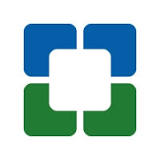Home Monitoring After Primary Total Knee Arthroplasty
| Status: | Completed |
|---|---|
| Conditions: | Arthritis, Osteoarthritis (OA) |
| Therapuetic Areas: | Rheumatology |
| Healthy: | No |
| Age Range: | 18 - Any |
| Updated: | 5/24/2017 |
| Start Date: | July 2016 |
| End Date: | May 2, 2017 |
Feasibility of Home Monitoring After Primary Total Knee Arthroplasty
Home monitoring technologies have recently emerged in many different areas of healthcare.
These technologies are being used to provide rehabilitation to patients, and to prevent,
identify, and manage complications. The investigators are proposing a method to monitor and
communicate with patients during the first 12 weeks after total knee arthroplasty (TKA)
using an electronic home-based patient monitoring system with unique connectivity
capabilities and prescriptive controls. The investigators will prospectively, electronically
capture range of motion and gait parameters at specified intervals using Bluetooth sensors
worn by the patient. The unique in-home patient monitoring platform will be utilized by 10
TKA patients once they return home following surgery. The investigators hypothesize that the
use of an internet based home patient monitoring technology platform will reliably provide
information related to the patients' pain and function and enhance patient feedback and
communication after TKA. The hypothesis will be tested with the following aim: 1) To test
the reliability of all technology utilized within the patient's home including but not
limited to the sensors, the communication controller, the patient interface (Android tablet)
and the internet by prospectively comparing between data collected through the home
monitoring technology and traditional clinical measurements taken during physical therapy
and surgical follow-up visits.
These technologies are being used to provide rehabilitation to patients, and to prevent,
identify, and manage complications. The investigators are proposing a method to monitor and
communicate with patients during the first 12 weeks after total knee arthroplasty (TKA)
using an electronic home-based patient monitoring system with unique connectivity
capabilities and prescriptive controls. The investigators will prospectively, electronically
capture range of motion and gait parameters at specified intervals using Bluetooth sensors
worn by the patient. The unique in-home patient monitoring platform will be utilized by 10
TKA patients once they return home following surgery. The investigators hypothesize that the
use of an internet based home patient monitoring technology platform will reliably provide
information related to the patients' pain and function and enhance patient feedback and
communication after TKA. The hypothesis will be tested with the following aim: 1) To test
the reliability of all technology utilized within the patient's home including but not
limited to the sensors, the communication controller, the patient interface (Android tablet)
and the internet by prospectively comparing between data collected through the home
monitoring technology and traditional clinical measurements taken during physical therapy
and surgical follow-up visits.
Over one million primary total hip and total knee arthroplasty (TKA) surgeries are being
performed annually in the U.S. and this number is expected to increase over the next seven
years, along with a simultaneously projected shortage of trained orthopaedic surgeons to
care for these patients. This proposal addresses the optimization of the surgeons' clinical
time through utilization of innovative home based technologies to monitor and communicate
with patients during the first 12 weeks after total knee arthroplasty. This will be
accomplished by establishing home monitoring connectivity with novel technology and measure
validated patient-reported outcomes, knee ROM and gait parameters in a postoperative TKA
patient's native living environment. It will allow the investigators to prospectively,
electronically capture clinically relevant TKA outcomes at the patient's home and provide
insight into postoperative rehabilitation progress, predictors of suboptimal clinical
outcomes, and guide future randomized controlled trial development to improve outcomes.
performed annually in the U.S. and this number is expected to increase over the next seven
years, along with a simultaneously projected shortage of trained orthopaedic surgeons to
care for these patients. This proposal addresses the optimization of the surgeons' clinical
time through utilization of innovative home based technologies to monitor and communicate
with patients during the first 12 weeks after total knee arthroplasty. This will be
accomplished by establishing home monitoring connectivity with novel technology and measure
validated patient-reported outcomes, knee ROM and gait parameters in a postoperative TKA
patient's native living environment. It will allow the investigators to prospectively,
electronically capture clinically relevant TKA outcomes at the patient's home and provide
insight into postoperative rehabilitation progress, predictors of suboptimal clinical
outcomes, and guide future randomized controlled trial development to improve outcomes.
Inclusion Criteria:
- Unilateral primary TKA
- Surgery is performed at Cleveland Clinic Main Campus or at Lutheran Hospital
- Patient must reside within 75 miles (driving distance) from Cleveland Clinic Main
Campus
- Patient expected to utilize Cleveland Clinic Home Care Services after surgery
Exclusion Criteria:
- Revision or simultaneous bilateral TKA
- English is not the patient's preferred language for healthcare discussions
- Currently participating in any other research study
We found this trial at
1
site
Cleveland Clinic Foundation The Cleveland Clinic (formally known as The Cleveland Clinic Foundation) is a...
Click here to add this to my saved trials
